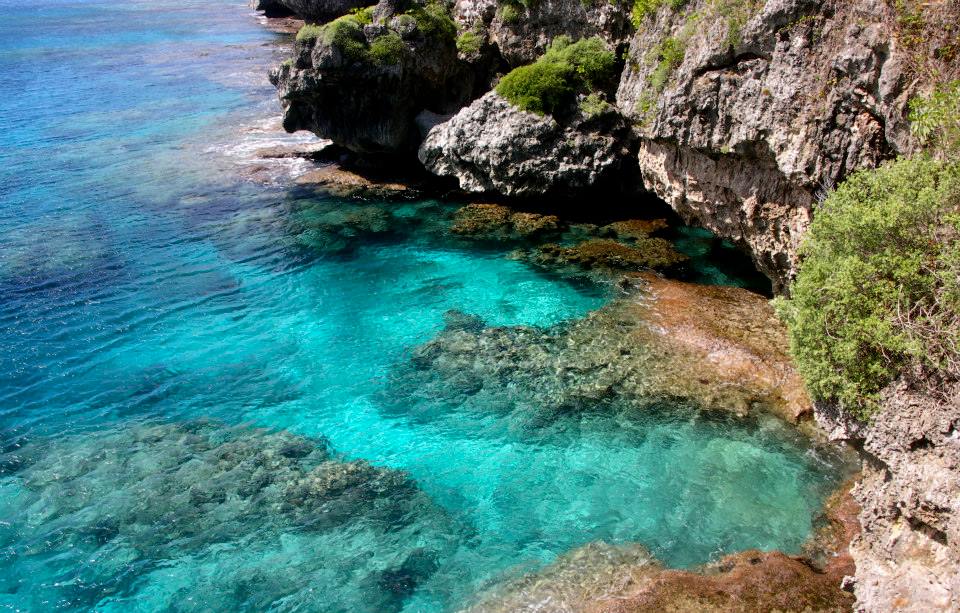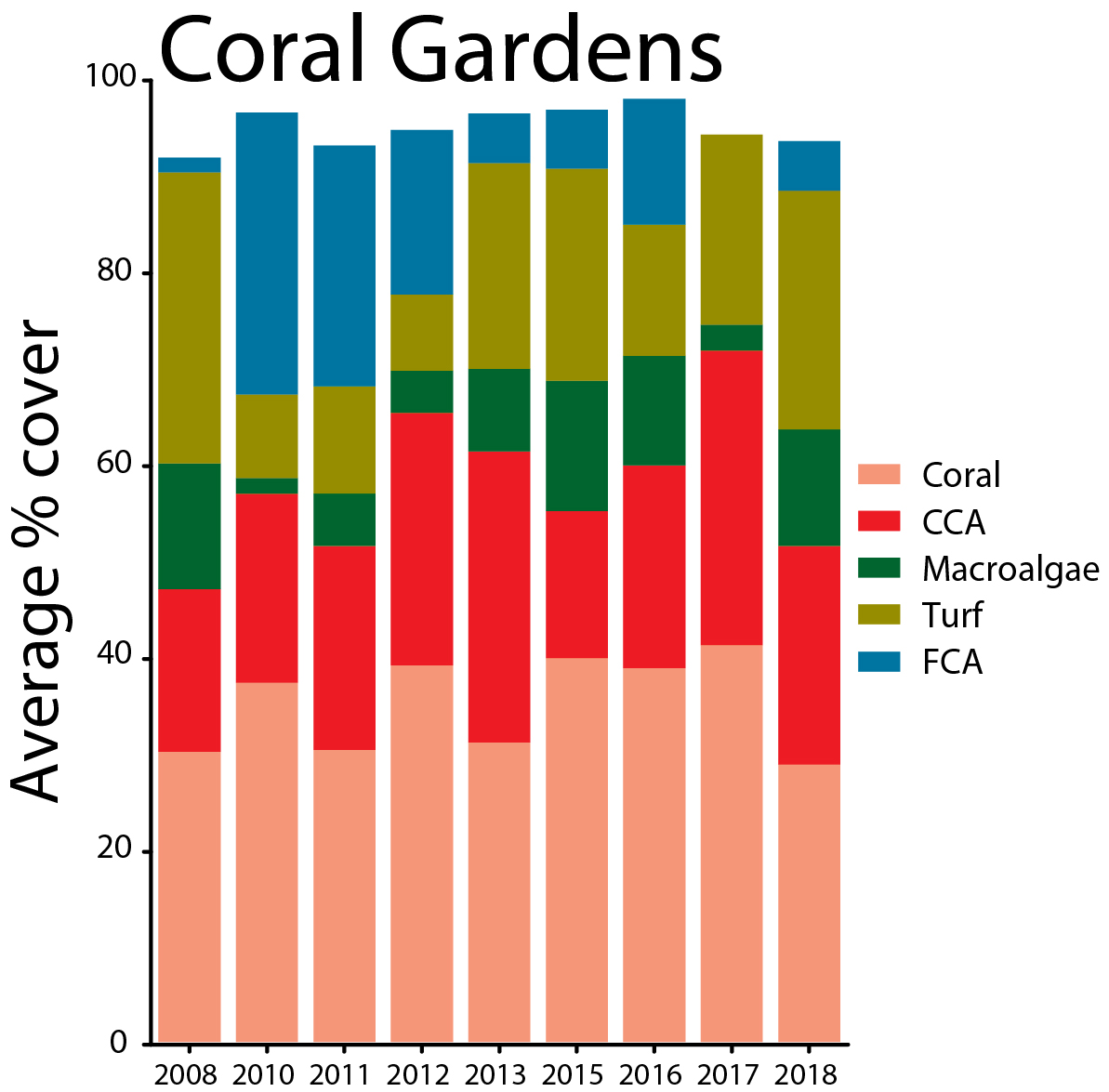Coral Gardens
Similar to Laolao Bay, Rota’s Coral Gardens is situated in a protected bay which provides calm oceanic conditions throughout much of the year. The protected nature of the bay has allowed thriving reefs to development over the past 5,000 years, resulting in amazing, three dimensional reef structure today (see photo below). This, along with its status as a no-take marine preserve, has turned Coral Gardens into a very desirable destination for divers.
One major difference between Laolao Bay and Coral Gardens is the nature of the freshwater runoff entering the marine system. Coral Gardens has relatively small amounts of surface water discharge when compared with Laolao Bay, rather, freshwater percolates through the limestone rock as groundwater runoff. Another difference is the lower population adjacent to Coral Gardens which helps to explain why fewer water quality violations have occurred over the years in comparison.
The CNMI Marine Monitoring Team has conducted surveys at Coral Gardens since 2000 with little overall change noted. Coral community evenness, has changed very little over the years as the persistence of a Porites rus dominated community continues to exist. In fact, Porites is so common that it makes up 95% of all the corals recorded in our benthic video surveys (see benthic coverage graph below).
This dominance is probably the result of two factors:
1) Very calm oceanic conditions year round create an environment that is favorable for the persistance and growth of Porites rus. In the CNMI, reefs that are more exposed to oceanic swells have less P. rus. On protected reefs P. rus may be a dominant competitor (see photo of P. rus overgrowing Goniastrea edwardsi), and has a plate like growth form that can block out sunlight from other corals below. Because rough oceanic conditions are rare, these delicate, plate-like colonies can persist (photo).
2) Acanthaster planci (Crown-of-thorn Starfish) rarely feed upon Porites corals, rather they prefer others. Historical reports describe large abundances of this coral-eating predator once present in Coral Gardens, and many other reefs around CNMI. Our data suggest that a small, persistent population still exists. These populations, in combination with #1 above, are the most probably explanation of P. rusdominance at Coral Gardens.
Macroinvertebrate abundances have fluctuated over the past 5 years, however no consistent trends are noted (see graph below). In general there are healthy abundances of Echinometra (grazing urchins) that forage upon turf and macroalgae.
Grazing creates a clean, desirable reef substrate for coral and other invertebrate settlement. Small sea cucumber populations have also been consistently present. Sea cucumbers are desirable because they feed upon organic matter which settles upon the reef substrate or sand, thus recycling and reusing the nutrient material. Efficient recycling is characteristic of healthy reef communities.

Benthic Cover



